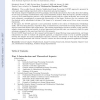Free Online Productivity Tools
i2Speak
i2Symbol
i2OCR
iTex2Img
iWeb2Print
iWeb2Shot
i2Type
iPdf2Split
iPdf2Merge
i2Bopomofo
i2Arabic
i2Style
i2Image
i2PDF
iLatex2Rtf
Sci2ools
87
Voted
JMIV
2006
2006
General Adaptive Neighborhood Image Processing:
The so-called General Adaptive Neighborhood Image Processing (GANIP) approach is presented in a two parts paper dealing respectively with its theoretical and practical aspects. The General Adaptive Neighborhood (GAN) paradigm, theoretically introduced in Part I [20], allows the building of new image processing transformations using context-dependent analysis. With the help of a specified analyzing criterion, such transformations perform a more significant spatial analysis, taking intrinsically into account the local radiometric, morphological or geometrical characteristics of the image. Moreover they are consistent with the physical and/or physiological settings of the image to be processed, using general linear image processing frameworks. In this paper, the GANIP approach is more particularly studied in the context of Mathematical Morphology (MM). The structuring elements, required for MM, are substituted by GAN-based structuring elements, fitting to the local contextual details of t...
Related Content
| Added | 13 Dec 2010 |
| Updated | 13 Dec 2010 |
| Type | Journal |
| Year | 2006 |
| Where | JMIV |
| Authors | Johan Debayle, Jean-Charles Pinoli |
Comments (0)

